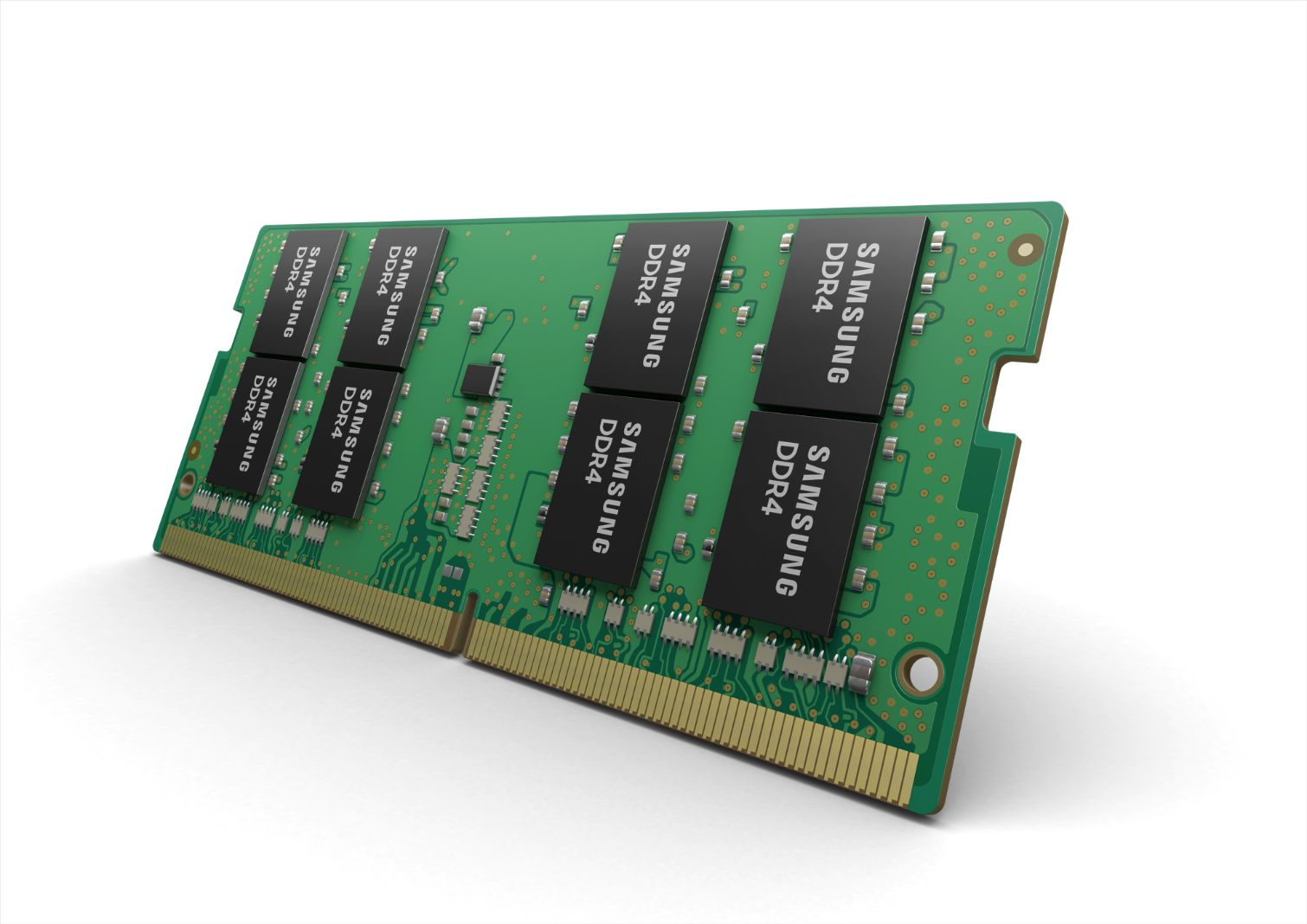Samsung Announces 32GB 10nm-Class DDR4 SoDIMMs For Gaming Laptops
Samsung announced production of new 32GB DDR4 memory designed for notebooks built on the 10nm-class process node. The new modules come after months of shipping 10nm-class desktop memory The release today covers the SoDIMM form factor, memory designed for use in notebooks where power consumption plays a larger role than in the desktop space.
The new modules double the density of 20nm-class memory introduced in 2014, from 8Gbit to 16Gbit per memory die. The modules increase performance by 11% to 2666Mbps and are up to 39-percent more energy efficient.
Samsung plans to targets gamer with the new 32GB 10nm-class memory but we see these working well in mobile workstations like the Lenovo P71 that I'm typing on now. The P71 can run four modules, up to 128GB of DDR4 system memory.
“Samsung’s 32GB DDR4 DRAM modules will deliver gaming experiences on laptops more powerful and immersive than ever before,” said Sewon Chun, senior vice president of memory marketing at Samsung Electronics. “We will continue to provide the most advanced DRAM portfolios with enhanced speed and capacity for all key market segments including premium laptops and desktops.”
Samsung didn't release any pricing details. The company has aggressively scaled out 10nm-class memory technology in recent months. The SoDIMM news follows the company's 10nm 16Gbit DDR4, and 16Gbit GDDR5 announcements for graphics cards, desktop, and server. systems.
Get Tom's Hardware's best news and in-depth reviews, straight to your inbox.

Chris Ramseyer was a senior contributing editor for Tom's Hardware. He tested and reviewed consumer storage.
-
thefiend1 NICE. Wonder what the price will be like. Maybe ill use these on my asrock x299 mitx board instead of the 16gb modules.Reply -
redgarl “Samsung’s 32GB DDR4 DRAM modules will deliver gaming experiences on laptops more powerful and immersive than ever before,”Reply
By passing from 12-14nm to 10nm, or by doubling memory... you will be lucky to get 5% of performance increase in games. That's a joke of a statement. -
nukemaster Reply
Marketing at its finest.21012340 said:“Samsung’s 32GB DDR4 DRAM modules will deliver gaming experiences on laptops more powerful and immersive than ever before,”
By passing from 12-14nm to 10nm, or by doubling memory... you will be lucky to get 5% of performance increase in games. That's a joke of a statement. -
TJ Hooker Despite the increased density/capacity being useless for gaming, I'm sure that won't stop gaming laptop owners from buying these sticks.Reply
A number of years ago I had an Asus gaming laptop and spent a bit of time on the Asus ROG laptop forums. I swear every other thread was someone upgrading their RAM to max capacity (32GB total), replacing OEM SSDs with Samsung PROs (of the same capacity half the time), putting SSDs in RAID0, etc. All for only gaming/desktop use. Basically all the upgrades you can make that are useless outside of benchmarks/bragging rights. That wouldn't stop them from making vague, subjective claims of better performance though.
There are plenty of people in the PC enthusiast world that seem to have more money than sense, but laptop enthusiasts seem to take it to the next level. -
wuethrichtech @redgarl - its about how you use it and how they implement it. lets assume a more simple model than out in the wild. aka forget that some laptops have dedicated graphics ram. now think textures and large sandboxes. if this doesnt illuminate why your statement is incredibly short sighted and off point I suggest you brush up on the two topics as they relate to ram utilization. The point you seem to miss is immersion isnt just about transfer speed. infact there may not be a bottle neck there.. but for large virtual worlds with high resolution textures and tons of virtual objects that you want to just be there...aka they dont appear 2 seconds after your car turns onto that street... you need a lot of space for them to liveReply -
TJ Hooker @wuethrichtech you can already easily get 32-64GB of system RAM with existing modules (2 or 4 16GB modules). High end GPUs only have 8-12 GB of dedicated VRAM. There is clearly no issue achieving that capacity of VRAM using system RAM for your iGPU with existing RAM modules. Not to mention that you're going to be completely hamstrung by your iGPU processing power and system RAM bandwidth long before you need those sort of VRAM capacities with an iGPU.Reply
So @redgarl is right, the increased maximum module capacity has no advantage for gaming now or for the foreseeable future.
